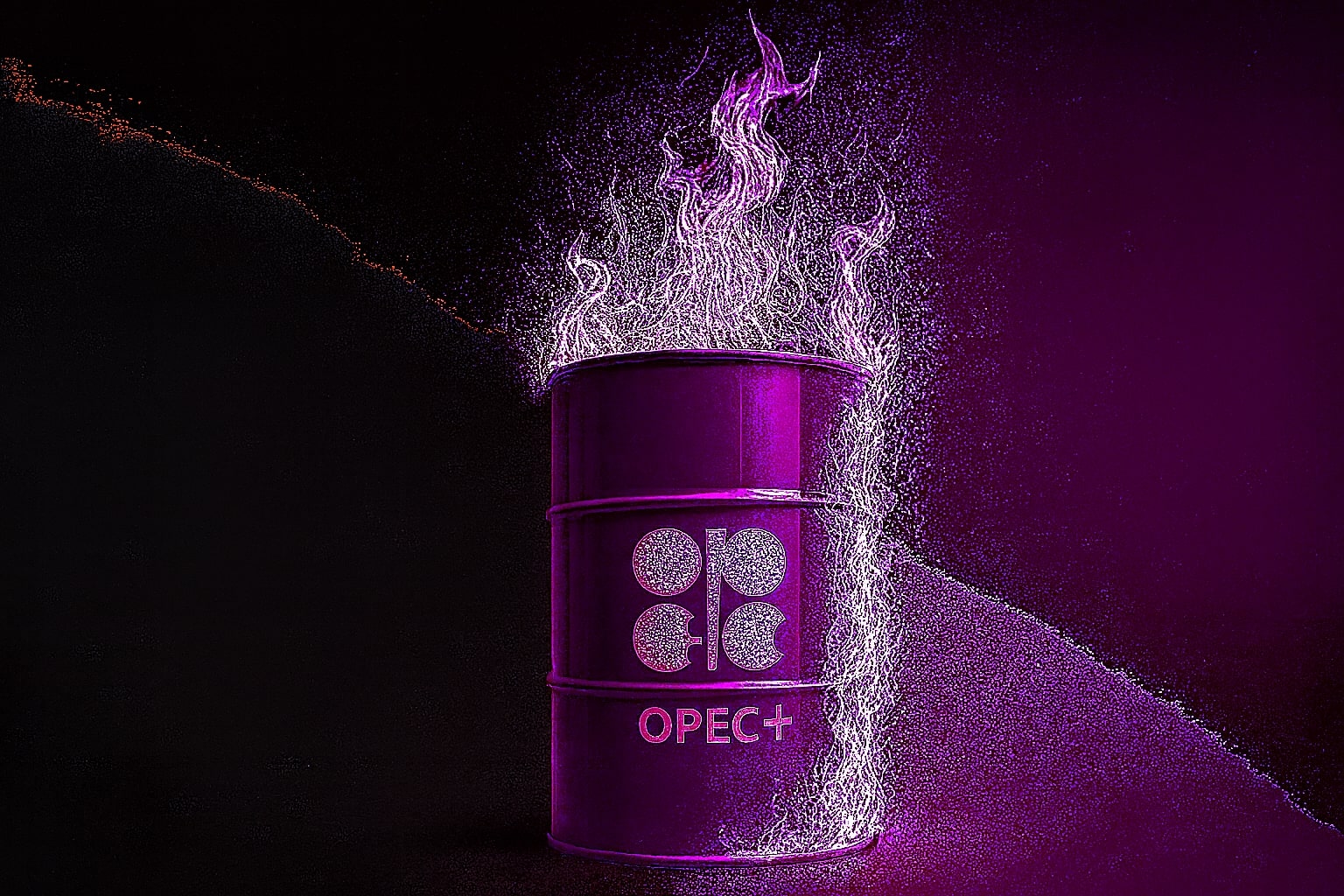
WTI Oil Price Collapses to $65.52 as Supply Swells and Geopolitical Risk Fades
Crude Slumps 12% in Two Weeks as OPEC+ Output Rises, Refining Margins Shrink, and Demand Disappoints | That's TradingNEWS
WTI Oil Falls to $65.52 as Risk Premium Evaporates and Supply Surges
Crude oil markets have sharply repriced as geopolitical fears ease and global supply pressures mount. As of June 29, WTI (CL=F) trades at $65.52 per barrel and Brent (BZ=F) at $67.77, both logging over 12% declines from mid-June peaks near $74 and $76, respectively. The sharp reversal reflects a rapidly fading war premium, rising production from both OPEC+ and non-OPEC sources, and waning demand growth in major economies.
Ceasefire Hopes in the Middle East Slash Geopolitical Premium
Oil's previous rally was underpinned by fears of escalation in the Middle East, especially concerning potential disruption in the Strait of Hormuz. However, as ceasefire negotiations advanced between Israel and Iran, and maritime traffic continued through the Gulf uninterrupted, crude prices shed an estimated $10–$12 risk premium. With no immediate threat to Iranian exports or regional tanker flow, oil markets quickly rebalanced to fundamentals.
OPEC+ Output Set to Rise in August Despite Demand Worries
OPEC+ plans to phase out part of its voluntary cuts, adding 411,000 barrels per day to the market in August. Kazakhstan is already exceeding its quota, contributing an additional 390,000 bpd, further pressuring prices. Saudi Arabia’s prior discipline is now diluted as oil revenues lag fiscal needs and compliance fractures among second-tier producers.
U.S. Shale Rebounds as Rig Count Stabilizes
American production is recovering, with shale fields adding incremental output. Analysts forecast U.S. production rising by 500,000 to 600,000 bpd by Q4 2025. Drillers have adjusted to $60–$70 WTI economics, particularly in the Permian Basin where breakeven levels hover near $45. Capital expenditures are recovering modestly, suggesting more output growth into Q1 2026.
Chinese Demand Tepid as Refiners Digest Inventories
China’s crude imports bounced to 11.3 million bpd, but most went into storage or were reallocated from prior months. Independent refiners, or "teapots," have slowed throughput due to tight margins. Product exports remain capped, and gasoline demand is stagnating due to EV penetration. While the government’s stimulus push could revive demand, current figures show only 155,000 bpd growth year-over-year.
Inventory Draws Mask Weak Refining Margins
U.S. crude inventories fell 5.8 million barrels, yet refinery utilization has dropped to 86%, and gasoline cracks are below their five-year averages. Lower margins suggest refiners expect soft consumer demand into late summer. Even with seasonality, gasoline drawdowns are modest compared to 2022 and 2023, with demand growth likely under 1%.
Technical Levels and Speculative Positioning Skew Bearish
Futures positioning shows net-long bets being unwound as hedge funds reduce exposure. The 14-day RSI for WTI is at 41, suggesting neutral momentum with downside risks. WTI faces resistance at $68.90 and $71.30, while key support levels lie at $63.80 and $60.20. A breach below $60 would likely trigger algorithmic selling.
Supply Glut Risks Dominate Short-Term Outlook
When combining OPEC+ additions, U.S. shale growth, and Iran’s ongoing exports (at 1.8 million bpd), the market could see an excess of 1.5–2 million bpd by Q3. The IEA projects global demand growth of only 720,000 bpd, far below 2023’s 2.3 million bpd. With inventory cover rising globally, traders are hedging for an oversupplied market through year-end.
Macro Backdrop Offers Limited Support
While U.S. inflation is cooling and central banks are holding rates steady, global macro indicators are mixed. Eurozone growth remains fragile, and emerging market oil demand is muted due to weak currencies. The U.S. dollar remains elevated, hurting importers. Until financial conditions ease significantly, oil lacks a macro tailwind.
Verdict: Oil Turns Bearish—WTI Target $60, Brent May Slip to $64
Given current price levels—WTI at $65.52 and Brent at $67.77—and the structural oversupply building into August, the outlook for oil is decisively bearish. Without a fresh geopolitical shock or major production cut from Saudi Arabia, crude appears poised to revisit $60–62 for WTI and $64–65 for Brent. Downside catalysts include Iranian overproduction, disappointing Chinese growth, and weak refining margins. Upside is capped unless there’s strategic inventory accumulation or a major weather event.
Recommendation: Sell WTI and Brent at current levels. Consider shorting August contracts with a stop-loss above $71 for WTI and $74 for Brent. Hold cash or rotate into defensive energy equities until the fundamental picture tightens.
That's TradingNEWS
Read More
-
SCHD ETF Price at $27: Can SCHD’s 4% Yield and 9.15% Dividend Growth Beat High-Yield Covered Call ETFs?
15.12.2025 · TradingNEWS ArchiveStocks
-
XRP ETFs Close on $1B Inflows as XRPI at $10.92 and XRPR at $15.52 Hit 52-Week Lows
15.12.2025 · TradingNEWS ArchiveCrypto
-
Natural Gas Price Forecast: NG=F Holds the $4 Floor as Oversupply Clashes with 2026 LNG Demand
15.12.2025 · TradingNEWS ArchiveCommodities
-
USD/JPY Price Forecast - Dollar to Yen At 155: Yen Strength Builds As BoJ Hike And NFP Collide
15.12.2025 · TradingNEWS ArchiveForex



















